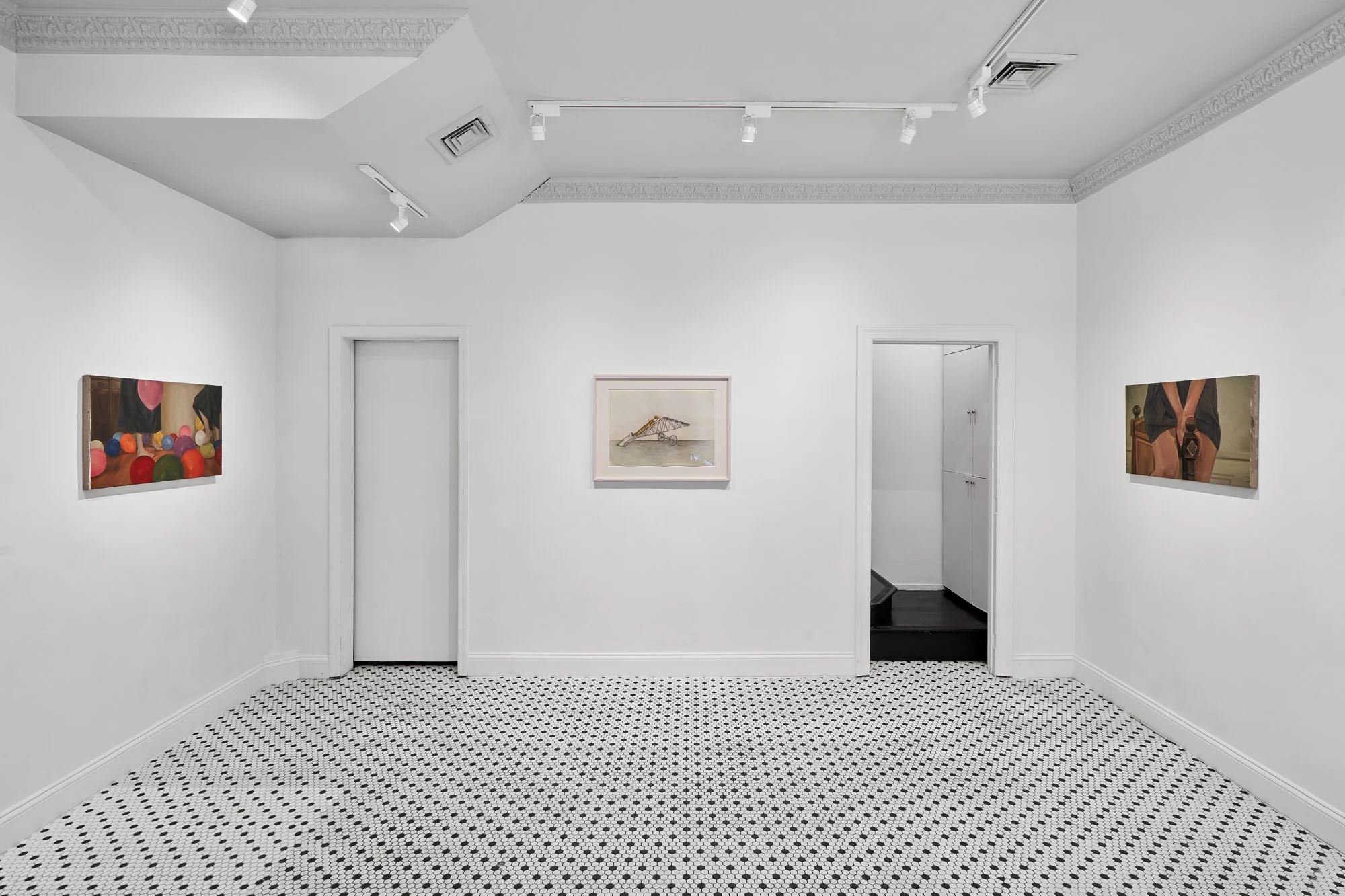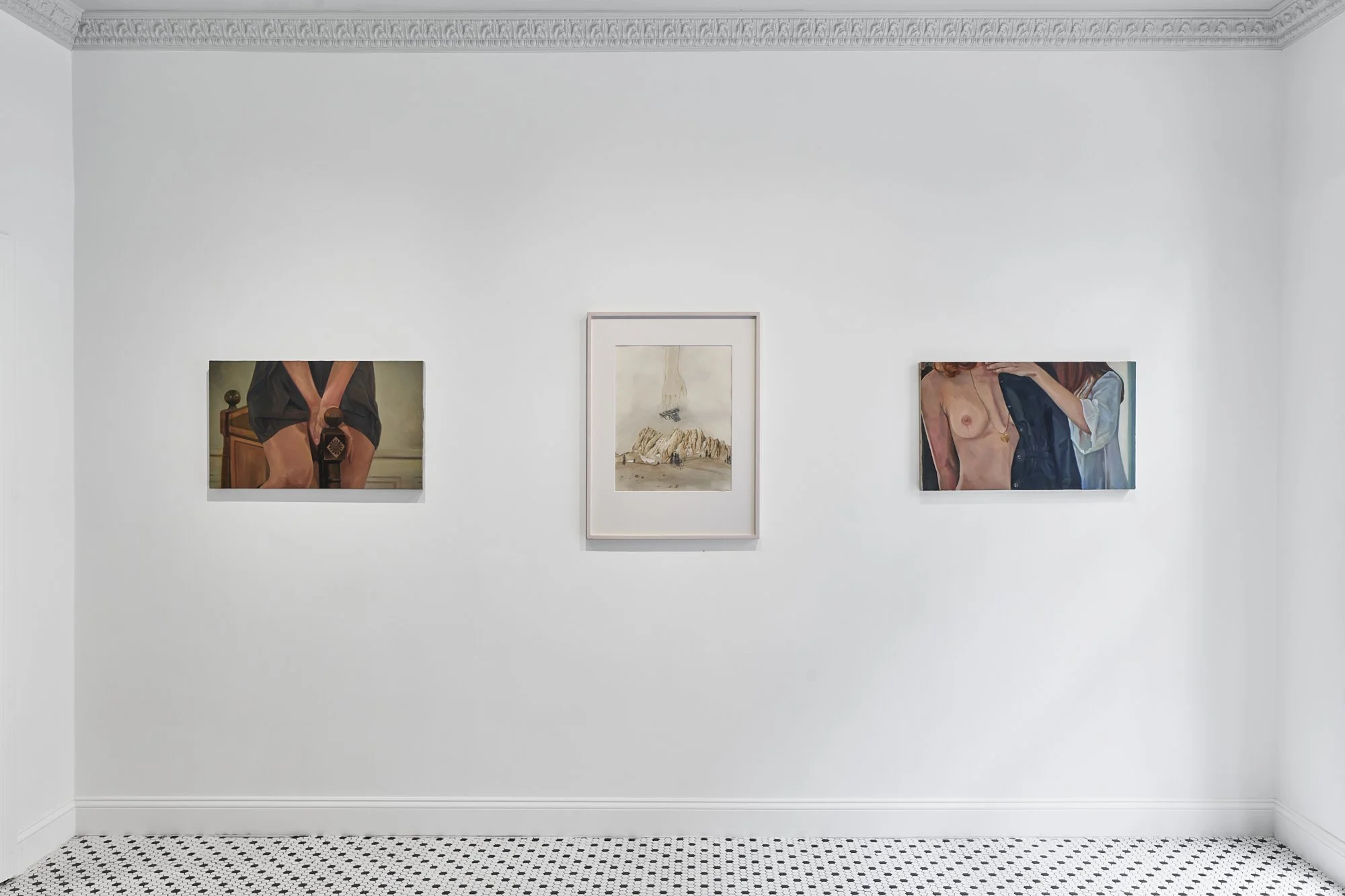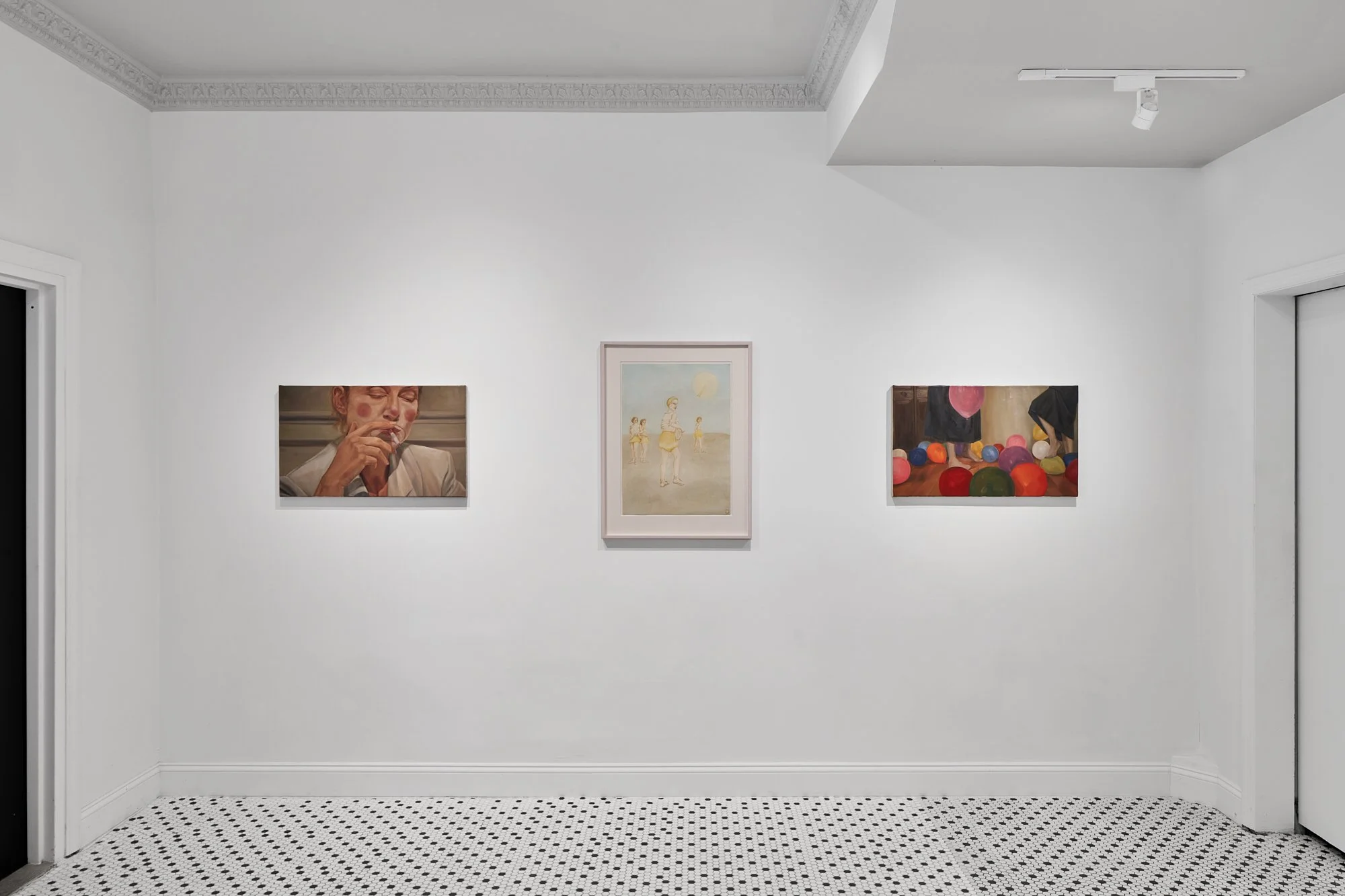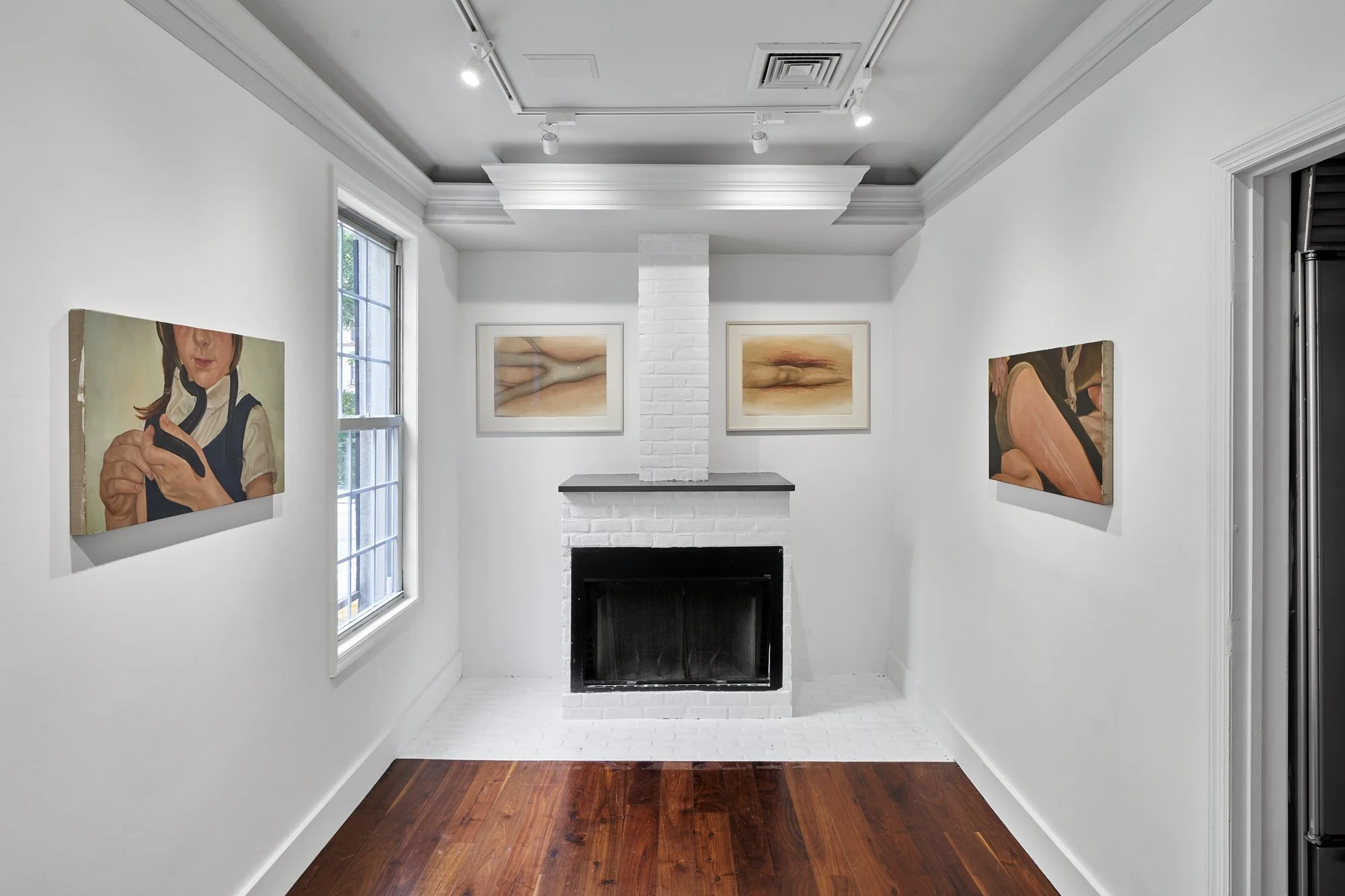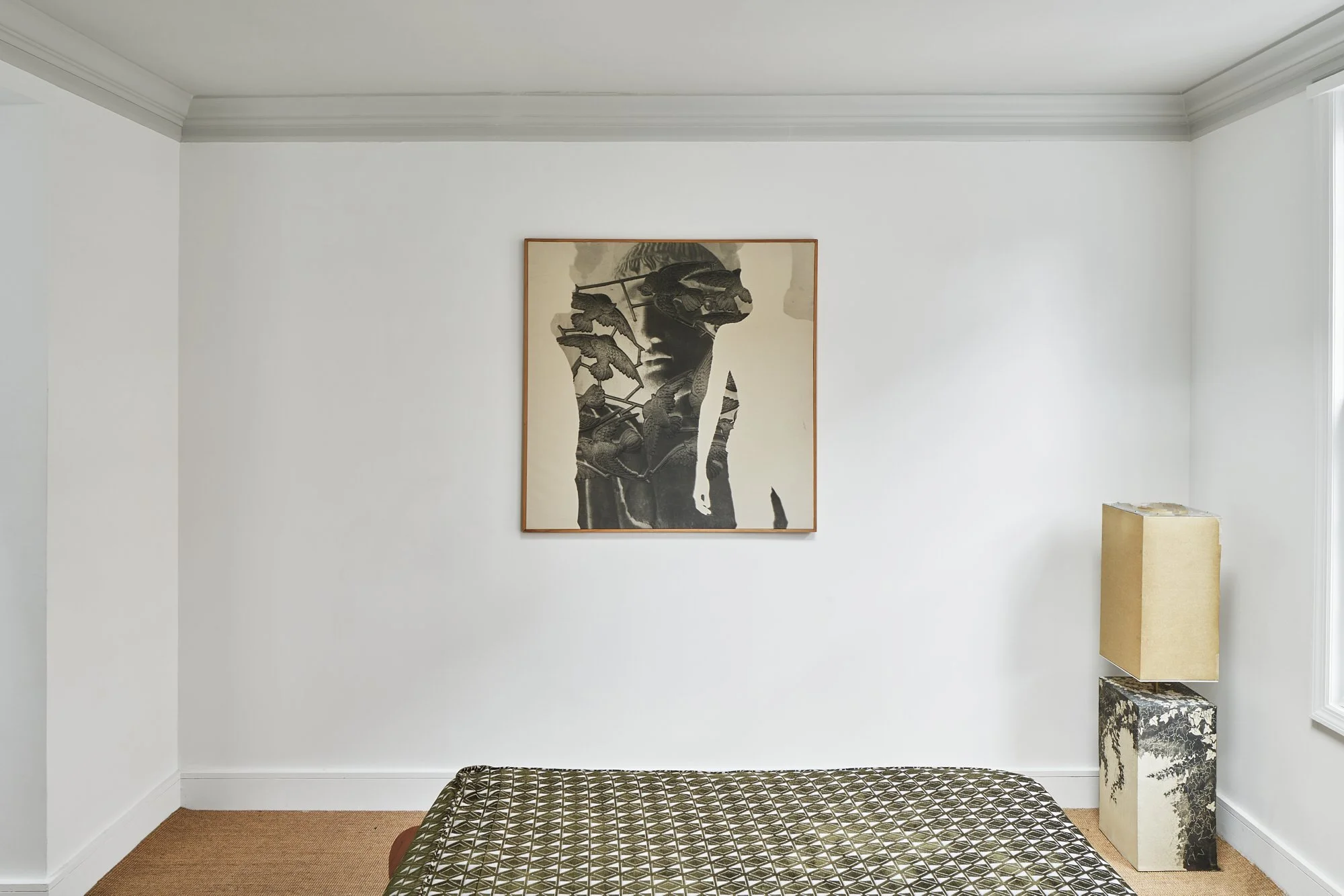Birgit Jürgenssen & Noelia Towers
October 15 – November 15, 2025
Opening reception: Wednesday, October 15, 6–8pm
The tension lodged within the works of Birgit Jürgenssen and Noelia Towers is on full display in this two-person exhibition at Slip House. Swinging between the former’s illustrations and photographs, and the latter’s crystalline painted images is a dance of surreal and penetrating depictions of womanhood; fraught, sentimental, peculiar, and everything in between.
Jürgenssen’s oeuvre, commonly recognized for its heterogenous nature, revolves around feminist inquiry and material experimentation. She exists just downstream from the Surrealist movement, wielding its psychosexual logics and nuanced formal avenues as a departure for her expressions of personhood, transformation, nature, and beyond. On view at Slip House, a selection of Jürgenssen’s works on paper demonstrate the Austrian artist’s penchant for altered bodily situations. The Echo in the Mountains, executed in 1977, sees a handgun hovering strangely in front of a subject-less hand, both forms cast above a craggly mountainscape, rolling hills, and a smattering of evergreen trees. This image runs counter to the hyperfocused body parts of Boundary Lines of a Lonely Knee and Veins - Borderlines in the Body (both 1978) in which Jürgenssen isolates anatomical elements.
The photographs on view–three of which were executed using the cyanotype process–are the results of stratified imaginal worlds that coalesce into a singular one. This sensibility is one that recurs across the board in the artist’s work, as she tends to collate different aspects into a coherent framework. In an interview with Felicitas Thun-Hohenstein from 2003, Jürgenssen explains: “I am not interested in depicting things themselves. Things only become exciting when the relations existing between them move to the foreground.” The artist’s dealer, Hubert Winter, also held that “with masquerading, metamorphoses, and self-portrayal she crossed the confines of identity,” a sentiment that connects her practice to that of Towers, whose own interrogations and obfuscations of personhood are presently staged alongside Jürgenssen’s.
Towers often probes domestic spaces as a means to explore the dimensions of a femininity confined to interiority. Here, the weight of performance and a contingent voyeurism proliferates. She’s sympathetically linked to Dorothea Tanning’s autobiographical surrealism that binds a bodily focus to peculiar contexts. Her work also recalls the unconventional cropping patterns of Philip Pearlstein, though his figures are largely reduced to objects and shapes in space. Towers’ women, on the other hand, are more agentic. Often rendering obscured subjects from behind, the painter stages affective provocations through singular images. Towers is especially prudent when it comes to the perfect vantage point, exacting each depiction of the body in order to induce a sense of nebulousness. She blends self portraiture with movie stills, art historical references, editorial shots, and the like.
Each image is also an act of restraint, a means of refusing a wholesale narrative. The viewer only receives a glimpse of each scene, being denied any stable avenues for interpretation. In Up to nowhere, for instance, a woman in white is seen crawling up an ominous staircase, the where and why lingering as core questions. This falls in line with one of Towers’s main concerns, that of the subject’s performance. While her figures are often rendered in isolation, Heart locket presents two women tangled up in a strange plot. Is the subject at the fore being dressed or undressed by the one looming behind her? The contrast between the depicted fabrics sparks something too; the leather’s hardness clashes against the softness of a nightgown.
The polarities and similitudes between Noelia Towers’s and Birgit Jürgenssen’s respective practices are well-represented here. While moving between the multimedia works on view, ideas and aesthetic congruences begin to take shape, eliciting an impressive collaboration.
— Reilly Davidson



